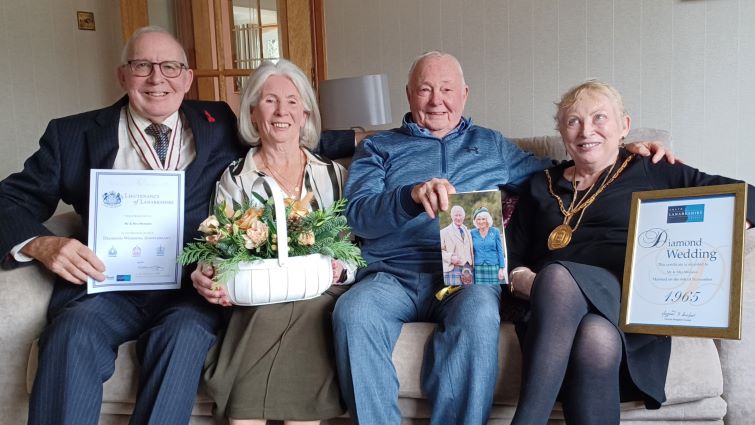From the Normandy battlefields to Low Parks, Don carries on
Published: Tuesday 26 August 2025
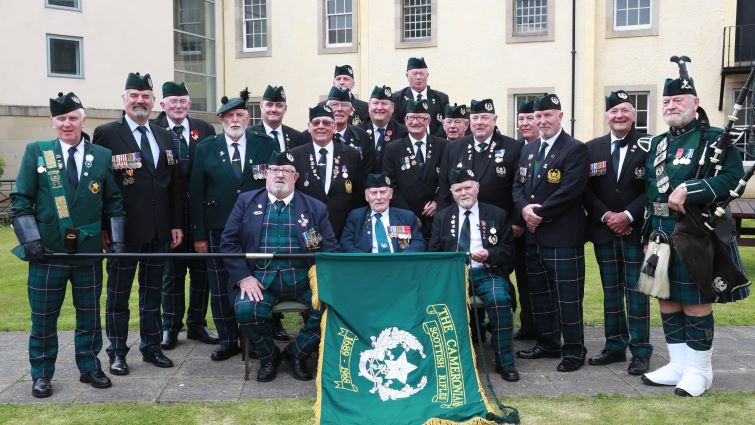
A Cameronian soldier who thought he’d never survive the D-Day landings and combat has visited his regimental museum in Hamilton.
WWII veteran Don Turrell met up with fellow Cameronians at Low Parks Museum just weeks after his 100th birthday.
Don was only 17 when he found himself on a ship headed for the Normandy landings, having lied about his age when he enlisted.
The young Londoner was initially assigned to the Northamptonshire Regiment but, after passing out from training, he was told that the Scottish regiments had lost particularly large numbers of men and that he would be allocated to the Cameronians (Scottish Rifles) instead.
“I was happy about that,” Don smiled, “because my mother was from Dunfermline and I had always felt a strong connection with Scotland. In fact, when it comes down to football, it’s always Scotland I support.”
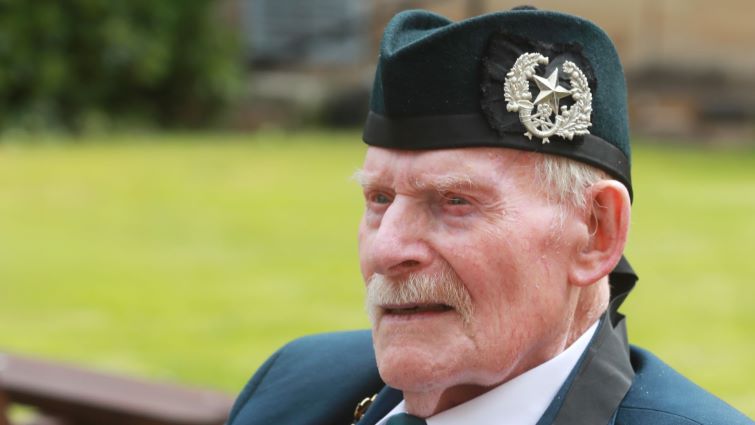
Don was on the second wave of landings, a few days after D-Day itself. He remembers looking at his comrades in the Cameronians’ 9th Battalion on the boat across the Channel and wondering how many of them would return. Very few of them ever did.
Although the fighting as they landed was relatively lighter than the first wave had faced, their approach brought its own brand of horrors.
He said: “While we were wading ashore, we did so with the bodies of our countrymen bumping against us as they floated in the shallows. They were just young men, at the start of their lives.”
Over the following weeks, the fighting was some of the fiercest of the conflict and, as light infantry, Don and his comrades faced the worst of even that. This was especially the case when they came up against the fanatics of the 12th SS Panzer Division in the battle for Hill 112, outside Caen, in one of the most decisive battles of the Second World War.
After 10 ten weeks of fierce fighting and the loss of 10,000 men, the Allies eventually seized control of one of the most important battlegrounds in northern France, allowing them to retake Caen and continue the liberation of Europe.
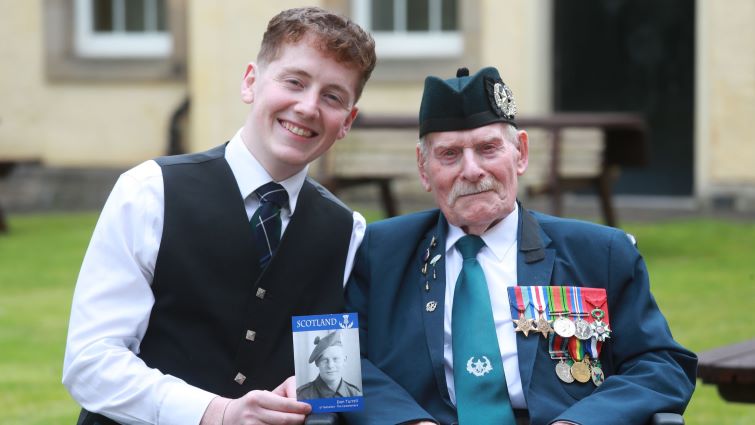
It was during this assault that Don’s company was advancing through woods and had to pass across a large clearing. They came under heavy machine gun fire that pinned them down, stopping them from moving in any direction.
“It turned out that the machine guns weren’t meant to get us in themselves,” Don said. “It was a tactic – they wanted to keep us on that spot, because they had their mortar ranged in on there. That was when we heard the mortars coming in – Moaning Minnies, we called them.
“All I could do was hunker down behind a tree stump and hope for the best. When I stood up, all but one of the men with me were dead – and he died in front of me as I watched.”
Don was injured right down his left side but, using his rifle as a crutch, he made it back the tree line where he found another British company. He and another injured man were put on two Bren Gun Carriers to take them to a field hospital – but the mortars started again and the carrier next to his took a direct hit, and only his vehicle made it back.
Don remembered being treated by the medics: “They worked their way up, because my left boot was holding my ankle together and so they started there, attending to that and taking bits of shrapnel out of my leg. There are still some pieces in there – I suppose that they are my souvenirs!
“They asked me how I was feeling and I said I had a bit of a sore back. They rolled me over and that’s when they found a large piece of shrapnel sticking right out of my lower back.
“They were able to patch me up all right, though, and sent me back to a hospital in Britain for proper treatment.”
Even the journey back was “eventful”, as Don put it – or fraught with danger and fear, as most people might say.
“When the boat was on its way, we heard a grinding noise,” he said. “I asked one of the sailors if something was wrong, and he said they had to take it a little carefully in this stretch, because what we were in a minefield and we were listening to the mines themselves rubbing against the hull as we passed.”
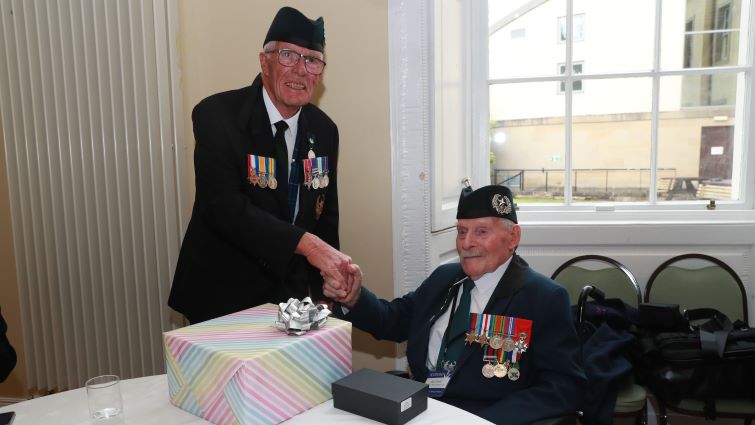
That was the end of Don’s war, as his injuries were so severe that it took three years in hospital to treat them, but he was left not only with his memories of the war, and harrowing as they were, they also instilled in him a deep appreciation of life and the fact that so many he had known were denied it.
It also left him with a deep-rooted bond with the Cameronians. It is one that is still as strong as he enters his second century as it ever was, and ever year it has seen him return to Normandy to remember and honour his comrades who didn’t come home.
So when he was undertaking this summer he fondly called his “Last Hurrah” trip to Scotland, he personally requested that it included a visit to the Cameronians Collection at Hamilton’s Low Parks Museum.
The trip was organised and carried out by the Taxi Charity for Military Veterans to give Don and two other WWII veterans – Dorothea Barron, who was a visual signaller in the WRNS, and Eugeniusz Niedzielski, who served with the 1st Armoured Polish Division – a tour of places in Scotland that were personal or significant to their lives during WWII.
The charity’s drivers three drivers each completed more than 1400 miles on the trip and had separate itineraries to ensure that the three centenarians could make it to the places and areas that were meaningful to each of them.
Accompanied by his friend who also serves as his carer on his trips, Callum Reid, and by 104-year-old Eugeniusz – who had been in the same area of Normandy and at the same time as Don, but who Don only met and became friendly with years later – Don was greeted at Low Parks by the sound of the bagpipes and a guard of honour organised by the Cameronians (Scottish Rifles) Friends and Families Organisation.
There he was able to chat with members of the organisation and receive a presentation from them, to view the museum and to meet up with South Lanarkshire’s Provost, Margaret Cooper, who herself has shown long-standing support for the veteran community and has had close association with Cameronians-related projects such as the memorial statue in Strathaven and her participation in last year’s commemorative event in the Netherlands.
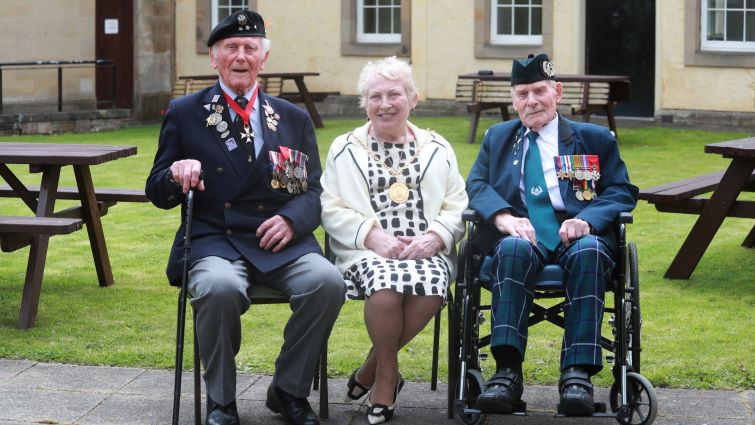
Provost Cooper said: “Low Parks Museum, Hamilton as a town, and South Lanarkshire as a whole have a long and deep connection with the Cameronians, and so it was wonderful that we could welcome one of their number who was actually a part of such a history-changing event as the D-Day landings.
“The Cameronians Friends and Families Organisation do such great work to keep the history and legacy of the regiment alive and honoured and they turned out in great numbers to honour Don, so it was also great to see what it meant to them to meet him.
“The work of the Taxi Charity for Military Veterans in bringing him – and Eugeniusz and Dorothea to Scotland and around the country is remarkable and commendable, and it is wonderful that people show such honour and respect towards those who have gone through so much to protect the rest of us.
“You can see that that work is worth it, though, when you meet someone like Don. He chats away with grace and dignity about times that are history to the rest of us, but those experiecnes took unimaginable courage to face those them and keep pressing forward regardless.
“Don is a lovely man and so it was not only wonderful to be able to thank him for his service at such a crucial time for our country, but also just to share this time with him.”
5 December 2025
Award recognises approach to tackling fuel poverty
4 December 2025
Children hear of Hollywood career with its roots at their own school
4 December 2025
Encounter at the dawn of the ’60s led to 60 years of marriage
3 December 2025
First nest houses land at new homelessness village
3 December 2025
Radical changes on way for East Kilbride town centre
2 December 2025
More council homes on the way in Hamilton
2 December 2025
Transforming gyms to help transform you
1 December 2025
Bridge inspection and road improvements on way
1 December 2025
Support for Ukraine continues
28 November 2025
Tommy's fit for work thanks to windfarm fund support






